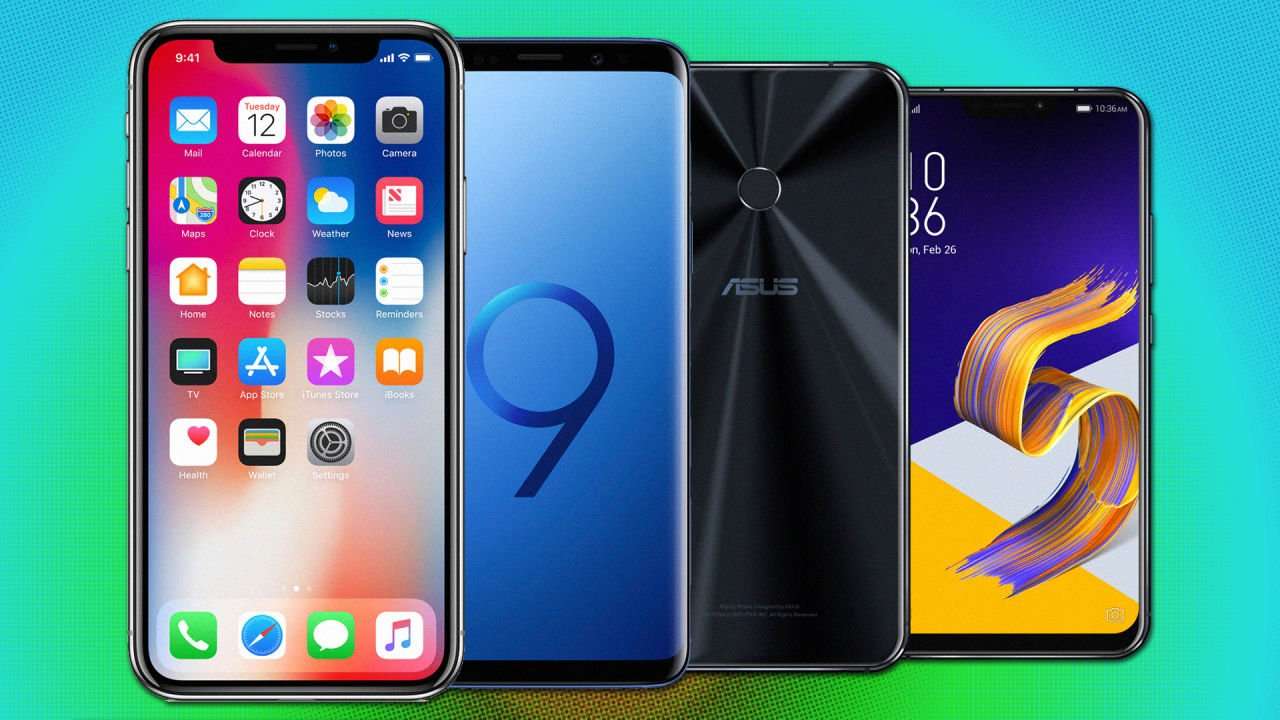In most years, MWC is a showcase for Android at its best, with a slew of affordable smartphones, cutting-edge tech specs, and new ideas like curved screens and optical-zoom cameras. The show ultimately demonstrates how Android phones are different—and in some ways, better—than the iPhone.
This year seemed different. Instead of playing up the things that make Android handsets unique, phone makers tripped over themselves to show that they were on equal footing with Apple. In doing so, they came off as cheap imitators, unable to keep up with ideas that may not even be worth pursuing to begin with.
The worst example was the use of a cutout, or notch, for the front-facing camera on phones with edge-to-edge displays. While the iPhone X’s notch is arguably an eyesore, at least it serves a clear purpose, housing the flood illuminator, dot projector, and infrared camera that allow Apple’s Face ID authentication system to work. The notch therefore serves as a statement about the technology underneath, which might explain why Apple paid such close attention to the design of its curves.
None of this was internalized by the notch purveyors at Mobile World Congress. Asus boasted that its Zenfone 5 and 5Z have smaller notches than the “Fruit Phone X,” which is easy enough to pull off when the phones have nothing like Face ID inside. And while Asus says its phones have a higher screen-to-body ratio than the iPhone X, they also have thicker bezels at the bottom of the screen that throw off the edge-to-edge design. The same was true with several other iPhone X knockoffs that appeared at the show.
There are other ways to make a phone that maximizes screen space. Samsung chose to preserve (skinny) top and bottom bezels on its Galaxy S9, while using curved glass to extend the display to both vertical edges. Xiaomi’s Mi Mix from 2016 had a single bottom bezel to house the front-facing camera, and projected sound through a vibrating metal frame instead of putting an earpiece on the front panel. At MWC, a company called Vivo even showed off an all-screen phone with a pop-up selfie camera. By comparison, companies like Asus are creating weak imitations of Apple’s design for no clear reason except to follow a trend.
Samsung wasn’t able to avoid unflattering comparisons to Apple either, as it tried to keep up with the iPhone X’s Face ID tech. Whereas Samsung’s Galaxy S8 forced users to choose between face recognition (which works best in well-lit environments) and iris scanning (which excels in darker areas), the Galaxy S9 combines both methods, trying one, then the other, then both. This is supposedly faster than the old system, but as CNet points out, it may still suffer from the same security weaknesses. As long as the system relies on 2D image recognition, it’s still susceptible to unlocking by photo, which might explain why Samsung won’t allow face recognition to authorize mobile payments.

benevolentpotato on March 3rd, 2018 at 01:24 UTC »
The Android community had a golden opportunity to make Apple look like fools by keeping the headphone jack and avoiding the notch. But instead they legitimized it, alienating their users in the process.
We don't want cheaper iPhones, we want Android phones, dang it.
throwaway090101 on March 2nd, 2018 at 21:46 UTC »
The clones are for people who want the look without the price tag. Western publications don’t seem to get that because theyre the ones who can afford iPhones.
Pat_Headroom on March 2nd, 2018 at 21:08 UTC »
The new Asus looks like a bad iPhone knock off.